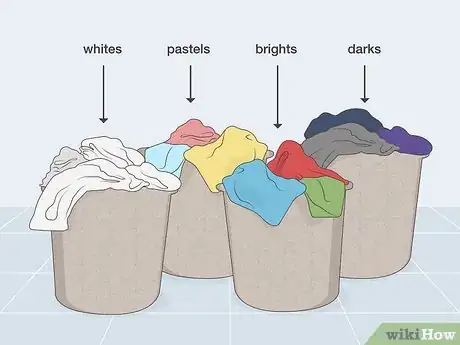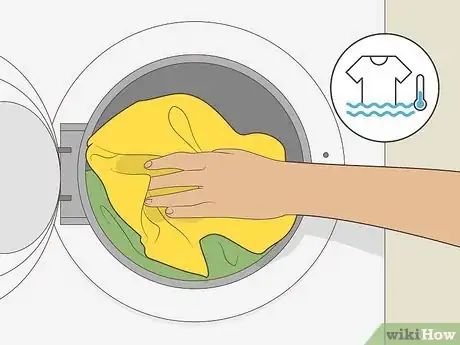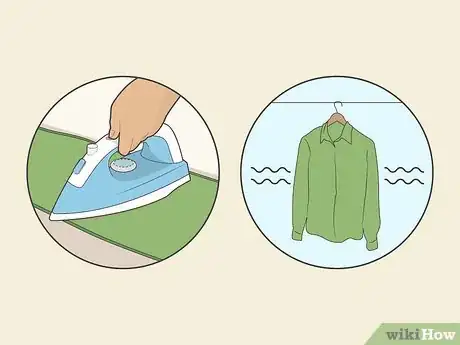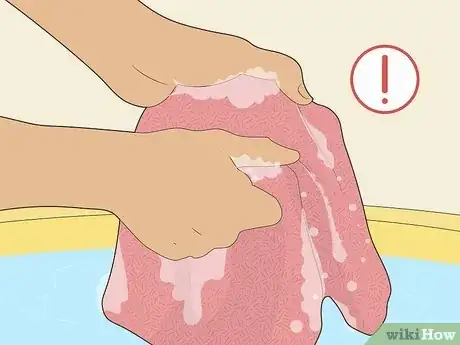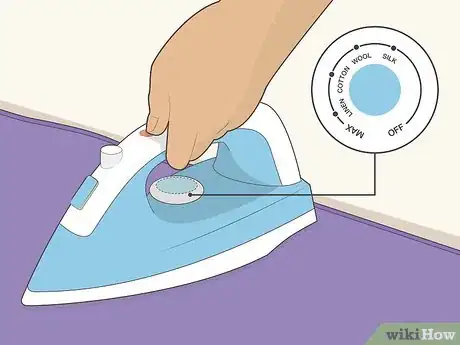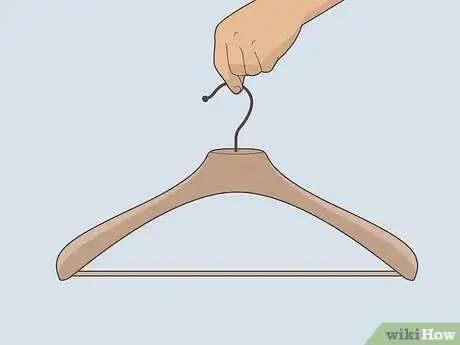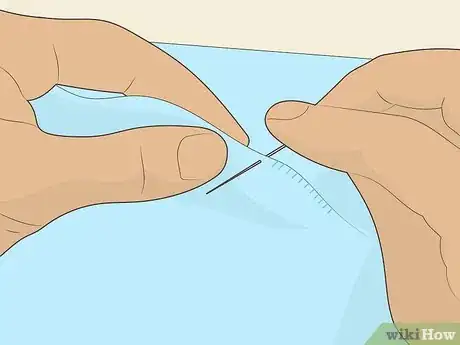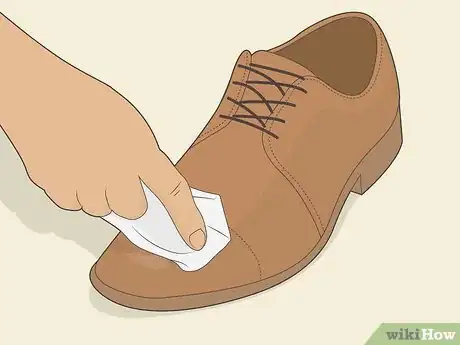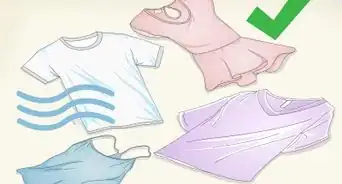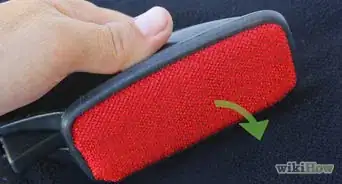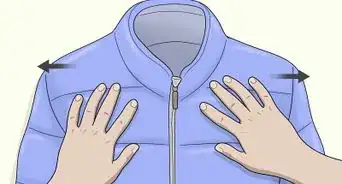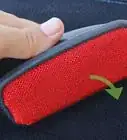This article was co-authored by Robert Rybarski and by wikiHow staff writer, Janice Tieperman. Robert Rybarski is an Organizational Specialist and Co-Owner of Conquering Clutter, a business that customizes closets, garages, and plantation shutters to ensure organized homes and lifestyles. Robert has over 23 years of consulting and sales experience in the organization industry. His business is based in Southern California.
There are 20 references cited in this article, which can be found at the bottom of the page.
This article has been viewed 301,936 times.
In a way, your clothes are an extension of who you are. While it feels great to slip into a stylish, comfortable outfit, sliding into a wrinkly shirt or pair of pants just doesn’t feel great. Don’t worry. While it takes a bit of extra effort, it’s easy to both improve and optimize your laundry routine. Whether you’re snuggling up on the couch for a movie night or heading out to the club with some friends, we’ve got lots of tips to help keep all your clothes in great shape.
Steps
Expert Q&A
Did you know you can get expert answers for this article?
Unlock expert answers by supporting wikiHow
-
QuestionWhat's the best way to store underwear?
 Robert RybarskiRobert Rybarski is an Organizational Specialist and Co-Owner of Conquering Clutter, a business that customizes closets, garages, and plantation shutters to ensure organized homes and lifestyles. Robert has over 23 years of consulting and sales experience in the organization industry. His business is based in Southern California.
Robert RybarskiRobert Rybarski is an Organizational Specialist and Co-Owner of Conquering Clutter, a business that customizes closets, garages, and plantation shutters to ensure organized homes and lifestyles. Robert has over 23 years of consulting and sales experience in the organization industry. His business is based in Southern California.
Organizational Specialist There are drawer dividers that you can get that would separate your drawer into sections. Then you can put your underwear into the different sections, and maybe categorize them or organize them by color. There are also dividers you can get that expand. You pull a center partition out and it opens up that square area for larger items, like socks.
There are drawer dividers that you can get that would separate your drawer into sections. Then you can put your underwear into the different sections, and maybe categorize them or organize them by color. There are also dividers you can get that expand. You pull a center partition out and it opens up that square area for larger items, like socks. -
QuestionWhat's the best way to store shirts on shelves?
 Robert RybarskiRobert Rybarski is an Organizational Specialist and Co-Owner of Conquering Clutter, a business that customizes closets, garages, and plantation shutters to ensure organized homes and lifestyles. Robert has over 23 years of consulting and sales experience in the organization industry. His business is based in Southern California.
Robert RybarskiRobert Rybarski is an Organizational Specialist and Co-Owner of Conquering Clutter, a business that customizes closets, garages, and plantation shutters to ensure organized homes and lifestyles. Robert has over 23 years of consulting and sales experience in the organization industry. His business is based in Southern California.
Organizational Specialist A lot of shelving sections don't have enough space in them height-wise, so if you have to stack five to eight shirts on top of each other, it's always a problem pulling the bottom one out because it tends to take the other ones with them. The best thing to do would be to get more adjustable shelves or some smaller cubbies that would fit the shirts and then you can stack up to 3-4 per shelf or cubbie at the most.
A lot of shelving sections don't have enough space in them height-wise, so if you have to stack five to eight shirts on top of each other, it's always a problem pulling the bottom one out because it tends to take the other ones with them. The best thing to do would be to get more adjustable shelves or some smaller cubbies that would fit the shirts and then you can stack up to 3-4 per shelf or cubbie at the most. -
QuestionHow should I store my ties in my closet?
 Robert RybarskiRobert Rybarski is an Organizational Specialist and Co-Owner of Conquering Clutter, a business that customizes closets, garages, and plantation shutters to ensure organized homes and lifestyles. Robert has over 23 years of consulting and sales experience in the organization industry. His business is based in Southern California.
Robert RybarskiRobert Rybarski is an Organizational Specialist and Co-Owner of Conquering Clutter, a business that customizes closets, garages, and plantation shutters to ensure organized homes and lifestyles. Robert has over 23 years of consulting and sales experience in the organization industry. His business is based in Southern California.
Organizational Specialist
References
- ↑ https://www.cleaninginstitute.org/cleaning-tips/clothes/laundry-basics
- ↑ https://www.cleaninginstitute.org/cleaning-tips/clothes/laundry-basics
- ↑ https://www.cleaninginstitute.org/cleaning-tips/clothes/laundry-basics
- ↑ https://www.cleaninginstitute.org/cleaning-tips/clothes/stain-removal-guide
- ↑ https://www.nytimes.com/guides/tmagazine/how-to-take-care-of-your-clothes
- ↑ https://www.bhg.com/homekeeping/laundry-linens/tips-checklists/cold-water-laundry/
- ↑ https://www.cleaninginstitute.org/cleaning-tips/clothes/laundry-basics/do-i-need-wash
- ↑ https://www.masterclass.com/articles/how-to-clean-your-jeans-in-a-washing-machine
- ↑ https://www.nytimes.com/guides/tmagazine/how-to-take-care-of-your-clothes
- ↑ https://www.bhg.com/homekeeping/laundry-linens/clothes/how-to-wash-clothes-by-hand/
- ↑ https://www.nytimes.com/guides/tmagazine/how-to-take-care-of-your-clothes
- ↑ https://www.esquire.com/style/mens-fashion/news/a52671/wash-dress-shirts-at-home/
- ↑ https://sewguide.com/wash-care-delicate-fabrics/
- ↑ https://www.bhg.com/homekeeping/laundry-linens/clothes/dry-clothes/
- ↑ https://www.persil.com/uk/laundry/laundry-tips/washing-tips/ironing-tips.html
- ↑ https://sewguide.com/how-to-iron-clothes/
- ↑ https://www.forbes.com/sites/houzz/2016/03/22/how-to-store-clothes-to-make-them-last/?sh=66b2f84057c0
- ↑ https://www.cosmopolitan.com/style-beauty/fashion/advice/a35576/surprising-ways-you-ruin-your-clothes/
- ↑ https://www.cosmopolitan.com/style-beauty/fashion/advice/a35576/surprising-ways-you-ruin-your-clothes/
- ↑ https://www.goodhousekeeping.com/uk/house-and-home/household-advice/a667255/tips-to-storing-away-your-summer-wardrobe-away/
- ↑ https://www.nytimes.com/guides/tmagazine/how-to-take-care-of-your-clothes
- ↑ https://sewguide.com/clothing-repair-mending-tears/
- ↑ https://www.nytimes.com/guides/tmagazine/how-to-take-care-of-your-clothes
- ↑ https://www.nytimes.com/guides/tmagazine/how-to-take-care-of-your-clothes
- ↑ https://www.harpersbazaar.com/uk/fashion/fashion-news/news/a36982/how-to-care-for-your-clothes/
- ↑ https://www.today.com/shop/laundry-room-organization-products-keep-your-space-clean-t177304
- ↑ https://www.apartmenttherapy.com/close-zippers-before-you-do-laundry-261264
- ↑ https://www.consumerreports.org/video/view/appliances/laundry/991542146001/laundry-color-catchers/
About This Article
To take care of your clothes, wear an apron when you’re cooking so you don’t get them soiled or stained. If you do drop or spill things on your clothes, treat the stain immediately by dabbing ice water or seltzer water on it so it doesn’t set. Additionally, remove your clothes from the dryer as soon as it stops, and hang them or fold them right away to prevent wrinkles. You should also watch for loose strings or threads on your clothes, and snip them so they don’t accidentally pull or snag, which can lead to more pulled-out stitches. To learn how to wash and dry your clothes so they’ll last longer, keep reading!
